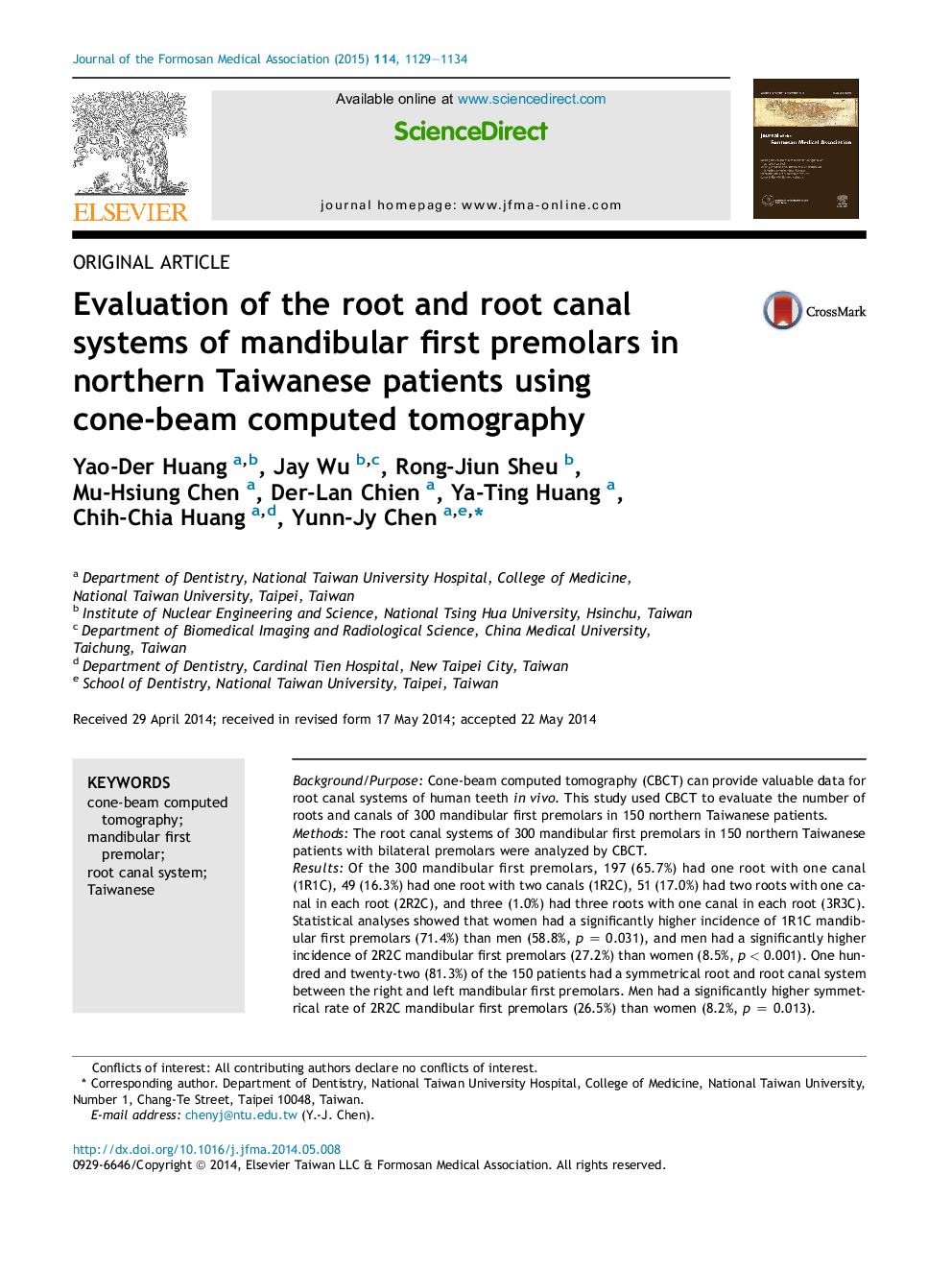| Article ID | Journal | Published Year | Pages | File Type |
|---|---|---|---|---|
| 3478304 | Journal of the Formosan Medical Association | 2015 | 6 Pages |
Background/PurposeCone-beam computed tomography (CBCT) can provide valuable data for root canal systems of human teeth in vivo. This study used CBCT to evaluate the number of roots and canals of 300 mandibular first premolars in 150 northern Taiwanese patients.MethodsThe root canal systems of 300 mandibular first premolars in 150 northern Taiwanese patients with bilateral premolars were analyzed by CBCT.ResultsOf the 300 mandibular first premolars, 197 (65.7%) had one root with one canal (1R1C), 49 (16.3%) had one root with two canals (1R2C), 51 (17.0%) had two roots with one canal in each root (2R2C), and three (1.0%) had three roots with one canal in each root (3R3C). Statistical analyses showed that women had a significantly higher incidence of 1R1C mandibular first premolars (71.4%) than men (58.8%, p = 0.031), and men had a significantly higher incidence of 2R2C mandibular first premolars (27.2%) than women (8.5%, p < 0.001). One hundred and twenty-two (81.3%) of the 150 patients had a symmetrical root and root canal system between the right and left mandibular first premolars. Men had a significantly higher symmetrical rate of 2R2C mandibular first premolars (26.5%) than women (8.2%, p = 0.013).ConclusionApproximately 82% of mandibular first premolars in northern Taiwanese patients have one root with either one or two canals. There are significant differences in the number of roots and canals and symmetry of the root canal system of bilateral mandibular first premolars between male and female northern Taiwanese patients.
